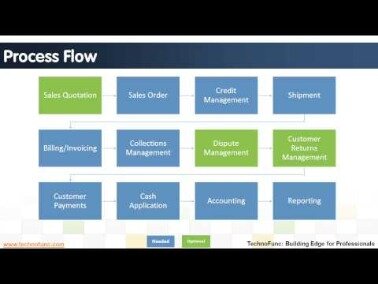Contents:


This means that on their balance sheet, their assets would be debited, and their revenue, or sales, would be credited. The next Assets entry shows that the business needed to pay their utility bills, so they therefore credited their assets, or cash, $300, and debited their expenses $300. Origins of the debit and credit systemdates back to the late fifteenth century. The trial balance labels all of the accounts that have a normal debit balance and those with a normal credit balance. The total of the trial balance should always be zero, and the total debits should be exactly equal to the total credits.
You can hire an best payroll software for accountantsant and bookkeeper to do your business’s double-entry bookkeeping. Or, FreshBooks has a simple accounting solution for small business owners with no accounting background. You invested $15,000 of your personal money to start your catering business. When you deposit $15,000 into your checking account, your cash increases by $15,000, and your equity increases by $15,000. When you pay for the domain, your advertising expense increases by $20, and your cash decreases by $20.
Example of Double Entry
John A. Tracy, CPA, is professor of accounting, emeritus, at the University of Colorado in Boulder. Harold Averkamp has worked as a university accounting instructor, accountant, and consultant for more than 25 years. Apart from the advantages, the double-entry method also has disadvantages that do not necessarily reduce the above advantages.
What Is the Accounting Equation, and How Do You Calculate It? – Investopedia
What Is the Accounting Equation, and How Do You Calculate It?.
Posted: Sun, 26 Mar 2017 00:30:41 GMT [source]
The gravel driveway leads to a lower-level, two-car garage, and also winds past a cobblestone walkway leading to https://bookkeeping-reviews.com/ doors topped by a half-moon window. For decades, ranching, mining and railroad workers living around Antelope entered the double entry doors to socialize and receive support when needed. Steps off the circular driveway lead up to a portico supported by thick columns and protecting an arched double entry door. INVESTMENT BANKING RESOURCESLearn the foundation of Investment banking, financial modeling, valuations and more.
What Is Double-Entry Bookkeeping? A Simple Guide for Small Businesses
This helps explain why a single business transaction affects two accounts as opposed to just one. For example, when you take out a business loan, you increase your liabilities account because you’ll need to pay your lender back in the future. You simultaneously increase your cash assets because you have more cash to spend in the present. The same goes if you invest your own money into your startup business.
This is because her technology expense assets are now worth $1000 more and she has $1000 less in cash. Accounting software provides controls to ensure your trial balance is accurate. The software will ensure that the total dollar amount of debits equals the credit balance and that each account balance is in your trial balance report. When entering business transactions into books, accountants need to ensure they link and source the entry. Linking each accounting entry to a source document is essential because the process helps the business owner justify each transaction.
Another column will contain the name of the nominal ledger account describing what each value is for. The total of the debit column must equal the total of the credit column. Creating A Balance SheetA balance sheet is one of the financial statements of a company that presents the shareholders‘ equity, liabilities, and assets of the company at a specific point in time. It is based on the accounting equation that states that the sum of the total liabilities and the owner’s capital equals the total assets of the company. Balance SheetA balance sheet is one of the financial statements of a company that presents the shareholders‘ equity, liabilities, and assets of the company at a specific point in time. A balance sheet is one of the financial statements of a company that presents the shareholders‘ equity, liabilities, and assets of the company at a specific point in time.
Now, you can look back and see that the bank loan created $20,000 in liabilities. Money flowing through your business has a clear source and destination. It looks like your business is $17,000 ahead of where it started, but that doesn’t tell the whole story. You also have $20,000 in liabilities, which you’ll have to pay back to the bank with interest.

The double entry helps ensure that every transaction is properly recorded and ensures that the generated financial information is accurate. This ensures that the journals and ledgers show a true and accurate picture of the company’s financial situation. This system also helps in identifying errors or fraud that may occur in the accounting process. Double-entry bookkeeping is an accounting method where each transaction is recorded in 2 or more accounts using debits and credits. A debit is made in at least one account and a credit is made in at least one other account. When using the double-entry accounting system, two things must always be balanced.
Unlike the double-entry method, single-entry bookkeeping requires you to make one entry per financial transaction. You simply keep a running list of everything you spend and everything you earn. That’s it—each financial transaction has just one line, and you don’t make multiple entries in multiple accounts. Single-entry bookkeeping is a record-keeping system where each transaction is recorded only once, in a single account.
Double-entry bookkeeping
When we make payment to our creditors, the receiver account is debited, and when we receive the payment, the giver account is credited. By using the double-entry method, the financial information provided is proven to be accurate and reliable. This can facilitate the identification and correction of errors as quickly as possible, ensuring that the financial information provided is accurate and reliable. Expense accounts show money spent, including purchased goods for sale, payroll costs, rent, and advertising. Income accounts represent money received, such as sales revenue and interest income.
- This is a cash-based bookkeeping method that tracks incoming and outgoing cash in a journal.
- Knowing exactly where you stand financially helps you make smart business choices to improve profits while trimming costs.
- The double entry helps ensure that every transaction is properly recorded and ensures that the generated financial information is accurate.
- You simply keep a running list of everything you spend and everything you earn.
- You can hire an accountant and bookkeeper to do your business’s double-entry bookkeeping.
In the double-entry accounting system, at least two accounting entries are required to record each financial transaction. These entries may occur in asset, liability, equity, expense, or revenue accounts. If the accounting entries are recorded without error, the aggregate balance of all accounts having Debit balances will be equal to the aggregate balance of all accounts having Credit balances.
For each transaction, the total debits recorded must equal the total credits recorded. Small businesses with more than one employee or looking to apply for a loan should use double-entry accounting. This system is a more accurate and complete way to keep track of the company’s financial health and how fast it’s growing.
Businesses that meet any of these criteria need the complete financial picture double-entry bookkeeping delivers. This is because double-entry accounting can generate a variety of crucial financial reports like a balance sheet and income statement. Every business transaction or accounting entry has to be recorded in at least two accounts in the books. At the end of each month and year, accountants post adjusting entries to the trial balance and use the adjusted trial balance to generate financial statements. Single-entry bookkeeping is much like the running total of a checking account. You see a list of deposits, a list of purchases, and the difference between the two equals the cash on hand.

Double-entry accounting can help improve accuracy in a business’s financial record keeping. In this guide, discover the basics of double-entry bookkeeping and see examples of double-entry accounting. The accounting equation defines a company’s total assets as the sum of its liabilities and shareholders‘ equity. Essentially, the representation equates all uses of capital to all sources of capital (where debt capital leads to liabilities and equity capital leads to shareholders‘ equity). For a company keeping accurate accounts, every single business transaction will be represented in at least of its two accounts. Bookkeeping and accounting are ways of measuring, recording, and communicating a firm’s financial information.
The following are the disadvantages of the method that you need to consider before applying it to bookkeeping. The Balance uses only high-quality sources, including peer-reviewed studies, to support the facts within our articles. Read our editorial process to learn more about how we fact-check and keep our content accurate, reliable, and trustworthy.

Chart Of AccountsA chart of accounts lists all the general ledger accounts that an organization uses to organize its financial transactions systematically. Every account in the chart holds a number to facilitate its identification in the ledger while reading the financial statements. The double entry bookkeeping was introduced between the 13th and 14th centuries, and one of its first mentions is found in Luca Pacioli’s book, published in 1494. He was well-known as the Father of Accounting, and he explained the double entry accounting method in detail to readers. A credit is that portion of an accounting entry that either increases a liability or equity account, or decreases an asset or expense account. Cross-checking is done by comparing debit and credit records for each transaction.
Method Of AccountingAccounting methods define the set of rules and procedure that an organization must adhere to while recording the business revenue and expenditure. Cash accounting and accrual accounting are the two significant accounting methods. Is recorded in a minimum of two accounts, one is a debit account, and another is a credit account. Also, the transaction should be balanced, i.e., the credit amount should be equal to the debit amount.

